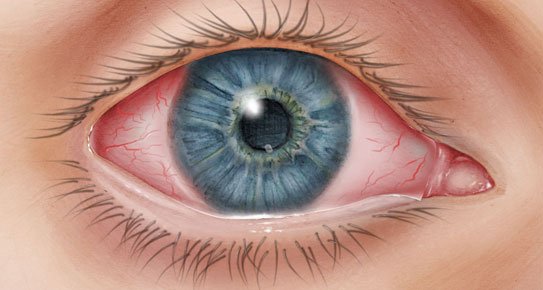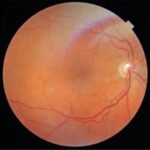Conjunctivitis, commonly known as pink eye, is a widespread condition involving inflammation of the conjunctiva. This clear membrane lines the eyelids and covers the white part of the eye. When it becomes irritated or infected, the eyes may appear red, swollen, and watery. Though it often causes only mild discomfort, in some cases it can become severe and even impact vision. Conjunctivitis is especially common in children but can affect people of all ages.
Causes of Conjunctivitis
Conjunctivitis can result from several sources. Viral infections are the most common cause and often appear alongside cold symptoms. Bacterial conjunctivitis is also widespread and can develop suddenly or over a few days, frequently spreading through contact with contaminated hands or objects. Allergic conjunctivitis occurs when the eyes react to allergens like pollen, dust, or pet dander. In some cases, exposure to irritants like smoke or chemical fumes causes chemical conjunctivitis, which results in immediate discomfort and eye redness.
Signs and conjunctivitis symptoms
The most noticeable signs of conjunctivitis are red, irritated eyes and a gritty or burning feeling. A person may wake up with their eyelashes stuck together due to dried discharge. The condition often affects both eyes and can cause itching, watering, or swelling. In viral or allergic conjunctivitis, the discharge is usually clear. In bacterial cases, it is thicker and may be yellow or green. Allergic conjunctivitis often brings nasal symptoms as well. Chemical conjunctivitis may cause stinging, excessive tearing, and sensitivity to light soon after exposure.
Types of Conjunctivitis
Viral conjunctivitis usually starts in one eye but may spread to the other. It often comes with symptoms of a cold and is highly contagious. Bacterial conjunctivitis may cause more noticeable discharge and crusting, and it sometimes requires antibiotic treatment. Allergic conjunctivitis is not contagious and tends to affect both eyes, particularly during allergy seasons or exposure to common allergens. Chemical conjunctivitis is triggered by contact with irritants and may require flushing the eyes or professional treatment, depending on severity.
How It Spreads
Viral and bacterial conjunctivitis are highly contagious. The infection can pass through direct hand-to-eye contact or by sharing personal items like towels or cosmetics. It spreads quickly in shared environments like schools, offices, and homes. Germs can live on surfaces for hours, making regular cleaning and handwashing critical in reducing transmission.
Preventing the Spread
To prevent the spread of conjunctivitis, practice regular handwashing and avoid touching your eyes. Use disposable tissues instead of cloth handkerchiefs, and never share items like towels or eye makeup. Any linens or towels used during infection should be washed in hot water. Infected individuals should avoid contact with others until symptoms clear and follow their doctor’s advice about returning to work or school.
Treatment and Recovery
Treatment depends on the cause. Bacterial infections may require antibiotic eye drops or ointments, while allergic conjunctivitis responds to antihistamines. Soothing the eyes with warm compresses can help reduce discomfort. Avoid contact lenses and eye makeup until the infection has cleared. Do not use an eye patch, as it can worsen the condition. If symptoms persist or worsen, it is essential to seek advice from an eye care professional.



